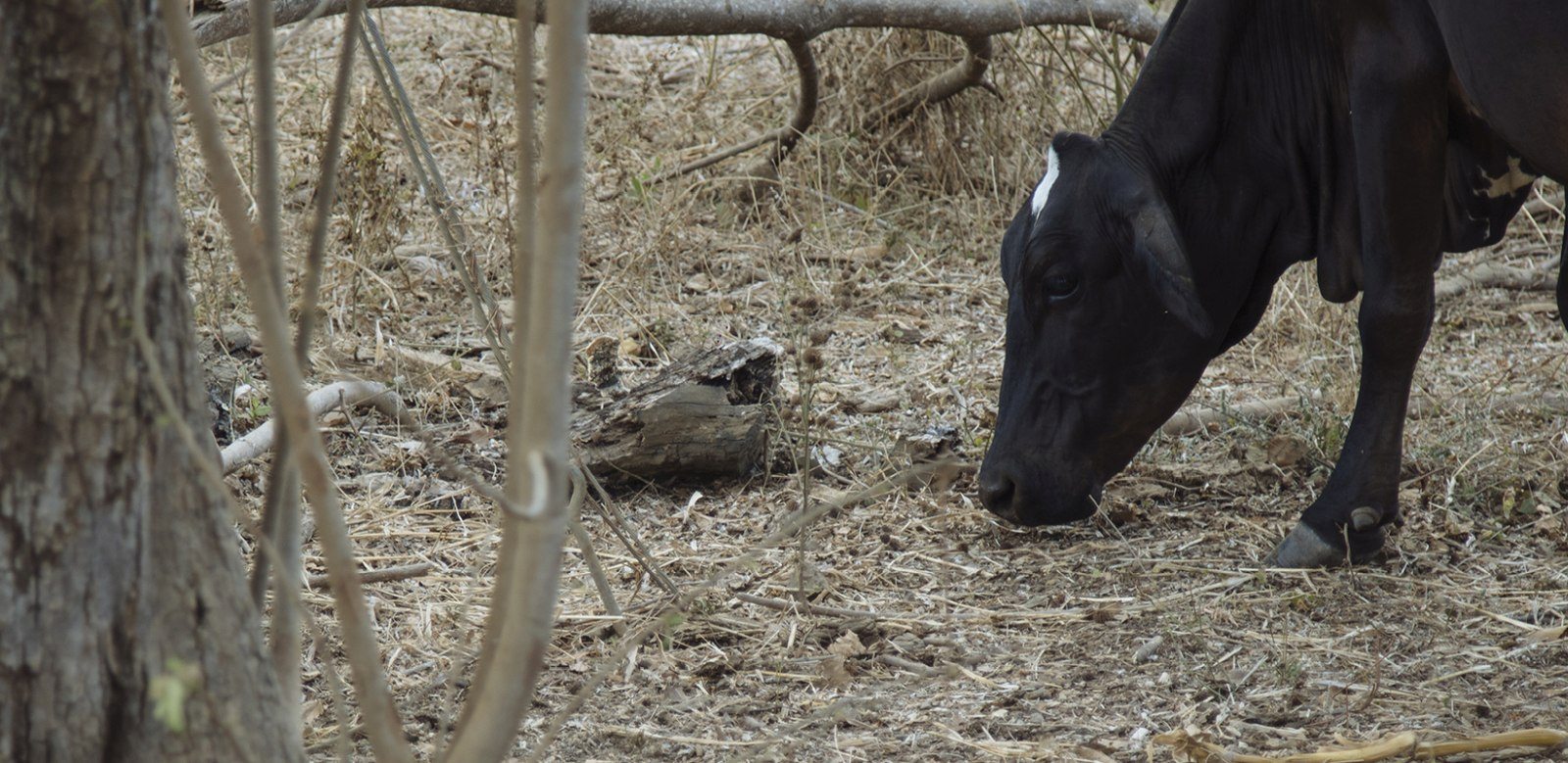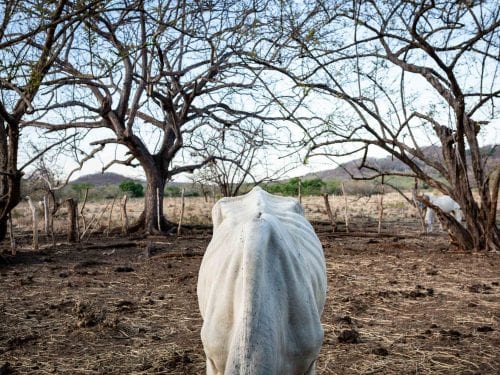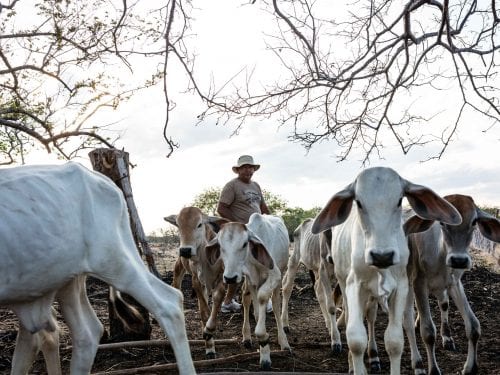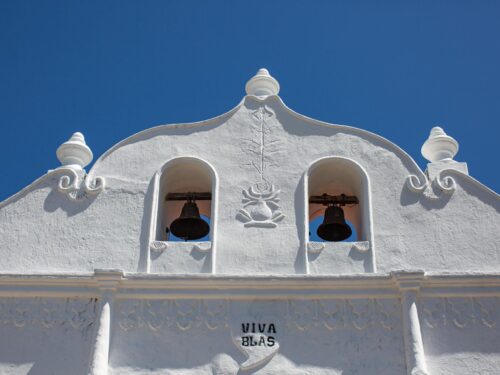
Beginning in March, the freshness and humidity of La Nina weather phenomenon leave and leave the door open to a hot Guanacastecan summer. In other words: lean times are coming.
The dry season wouldn’t be called that if the ranching industry hadn’t adopted, on a large scale, new methods to feed their animals under adverse conditions. At least that’s what some ranchers say.
According to the National Meteorological Institute’s projections, this summer won’t be as scorching as 2015, when the drought was at its most intense point. Still, there is no certainty that the cattle industry will fare better this time.
The consequences can range from lower cattle prices and a drop in production and even the death of some animals.
Cultural Problem
The president of the Chamber of Ranchers in Nicoya, Leonor Ruiz, warned that “ranchers don’t know how to access the knowledge that we could offer them,” and she lamented the low attendance at Chamber-run courses offered in 2016 to the Chamber’s 347 members.
“We once gave a workshop on hydroponic forage in which we gave out all of the necessary materials. Nobody has been using them, not even to plant vegetables. One say I went to a rancher’s house and they were using it to hang clothes,” added the president.
Rancher Mauricio Pineda, a pioneer in grass growing using drip irrigation, explained that many Nicoyan growers are conscious of a lack of food caused by the summer, and they know there are solutions, but they still don’t put those solutions into practice due to their cultural stubbornness. This perpetuates past practices.
I’ve heard ranchers use the expression (even after the drought) about cattle that if you have water and grass, the summer will pass. The lesson was received but not learned,” said Pineda.
Economic Problem
Although Mauricio Pineda says that Nicoyans recognize the problems summer brings, he also says that many people cannot implement new methods to feed their cattle due to a lack of economic resources.
Elier González, organizer of the El Progreso Cattle Auction, maintains that the dry season affects local producers pocketbooks, given that some sales are made at a lower price because of a fear of not being to take care of the cattle.
That’s why Pineda and the Nicoya Chamber urge their colleagues to persist in creating projects that guarantee enough food for their farms.
“The investment comes back to you. I don’t have any losses; my cattle don’t die or get skinny, and I keep the same level of milk and beef production in the summer,” commented Pineda about the advantages of drip irrigation, which cost ¢5 million colones.
“We can’t stop a drought, but we can soften it’s affects,” he added.
Is Available Assistance Used?
During 2016, the National Emergency Commission (in Spanish, CNE) and the Ministry of Agriculture and Livestock (in Spanish, MAG) handed out ¢500 million in machinery and supplies to nearly 6,500 farmers in Guanacaste as part of an assistance plan created when the drought began in 2014.
However, the president of the Nicoya Chamber of Ranchers highlighted that they’ve found cases in which ranchers waste some of these benefits.
“The CNE gave out concentrates, molasses, paca, minerals. They gave improved grass seeds and some [ranchers] say they sold them; others say they planted them and they didn’t work,” said Ruiz.
The Nicoyan Chamber highlighted that the MAG didn’t give them a motorized silo loader until February, 2017; the machine was requested in September of last year, when it could have been used to face this summer.
Ronald Mora, head of agricultural attention in the MAG in Nicoya, justified the delayed delivery due to the review process that each request much undergo. “This is the first time we’ve delivered these machines and this year they’ll have the chance to ensile during the grass-growing season,” he said.







Comments